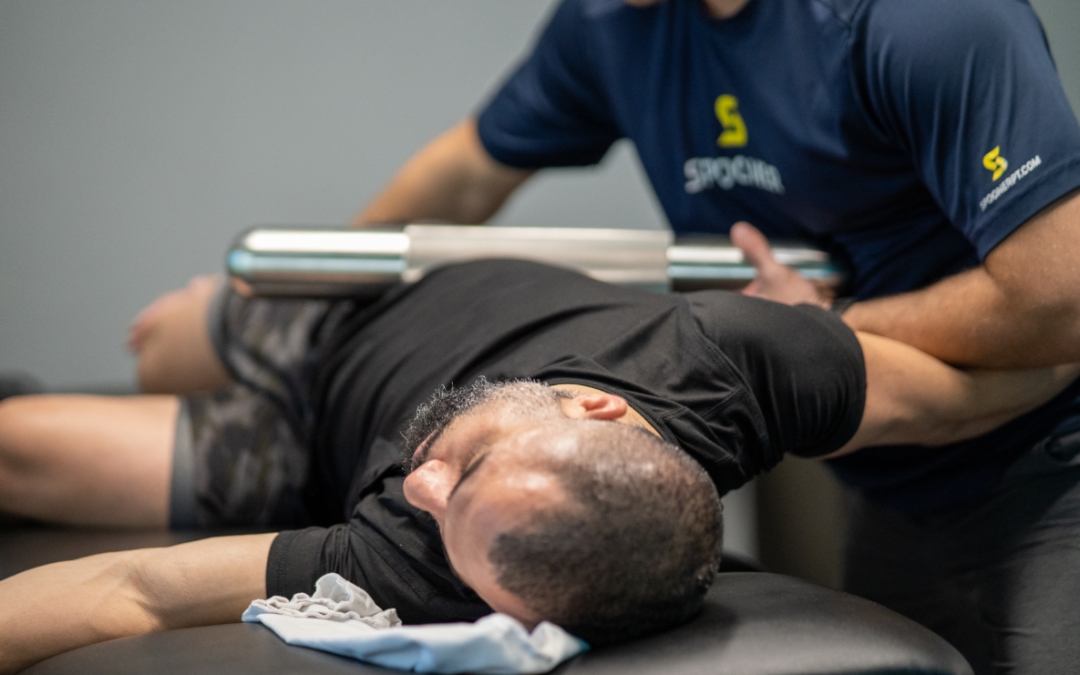Understanding Body Tempering
Body tempering has emerged as a popular recovery and performance-enhancing method in the wellness community, and it is gaining traction among athletes and fitness enthusiasts in Fishers, IN. This technique involves the use of specialized weighted tools that are applied strategically to the body to relieve tension, break up fascial adhesions, and improve overall mobility. Unlike traditional massage methods, body tempering relies on precise pressure applied with consistent weight, rather than repetitive rubbing or kneading. The origins of body tempering are rooted in sports therapy practices, designed to accelerate recovery while enhancing athletic performance. It is particularly effective for individuals who experience tight muscles, limited range of motion, or chronic soreness from training or daily activities. Many practitioners emphasize that body tempering is a proactive method of preventing injury rather than just addressing existing pain. Its growing popularity is supported by anecdotal evidence from athletes who report quicker recovery and better flexibility after consistent sessions.
How Body Tempering Works
The process of body tempering involves weighted bars or rods that are applied to specific areas of the body, such as the shoulders, back, legs, and arms. These tools exert controlled pressure that gently compresses muscles and fascia, allowing for a release of tension without causing damage. The consistent weight increases blood flow to the affected areas, which helps deliver oxygen and nutrients while flushing out metabolic waste that contributes to soreness. Body tempering is particularly effective in targeting tight spots and trigger points that traditional stretching or foam rolling might not reach. During a session, practitioners may combine different weights, positioning techniques, and timing strategies to optimize results. Regular application can improve flexibility, promote better posture, and enhance overall movement efficiency. This method also encourages the nervous system to relax, which can lead to reduced stress and better muscle coordination. People often notice improvements in joint mobility and reduced stiffness shortly after a session.
Benefits of Body Tempering
Body tempering offers a wide range of benefits that go beyond simple muscle relaxation. Athletes and fitness enthusiasts often use it to enhance performance, while individuals recovering from injuries find it useful for supporting rehabilitation. Key advantages include improved flexibility, accelerated muscle recovery, and prevention of potential injuries. Additional benefits include increased blood circulation, reduced muscle soreness, and enhanced mental relaxation. Regular sessions can help maintain optimal movement patterns, which are essential for high-performance training. Body tempering can also complement other recovery strategies, such as strength training, yoga, or physical therapy, providing a holistic approach to wellness. For those who spend long hours sitting or performing repetitive movements, it offers relief from chronic tightness and helps restore natural range of motion.
Who Can Benefit from Body Tempering
Body tempering is suitable for a wide range of individuals who want to optimize their physical health. Athletes and sports enthusiasts often incorporate it into their training routines to improve mobility and recovery times. Individuals recovering from injuries or surgeries can use it under professional supervision to reduce stiffness and promote safe movement. People experiencing chronic muscle tightness or tension from daily activities can benefit from its ability to release deep-seated stress in muscles. Even beginners who are new to fitness can incorporate body tempering to prevent overuse injuries and maintain healthy muscle function. Older adults looking to maintain flexibility and reduce joint discomfort can also see improvements with regular sessions. Its versatility makes it a valuable addition to wellness routines for anyone looking to enhance movement, reduce pain, and feel more energized.
What to Expect During a Body Tempering Session
A typical body tempering session usually lasts between 30 and 60 minutes, depending on the individual’s needs and targeted areas. Sessions often begin with a brief assessment of muscle tension, posture, and movement patterns. Practitioners then apply weighted tools gradually to specific muscle groups, ensuring that pressure is both effective and comfortable. Techniques may involve static holds, gentle rocking, or rolling motions using the weighted bars. Safety is a top priority, so clients are encouraged to communicate any discomfort or sensitivity throughout the session. Many people report feeling a deep release of tension, increased blood flow, and a sense of relaxation after the session. Practitioners may also provide tips on stretches or exercises to maintain the benefits between visits.
Body Tempering vs. Other Recovery Techniques
While massage therapy, foam rolling, and stretching are commonly used recovery methods, body tempering offers distinct advantages. Unlike traditional massage, it relies on consistent weight and pressure rather than repetitive hand movements, which can more effectively release deep fascial restrictions. Foam rolling primarily targets superficial muscle layers, whereas body tempering can reach deeper tissues and trigger points. Stretching improves flexibility but may not adequately address chronic tension or adhesions. Key advantages of body tempering include:
- Deeper muscle and fascia release
- Faster recovery times
- Improved blood circulation and nutrient delivery
- Enhanced joint mobility
- Reduced risk of injury when combined with training
These benefits make body tempering a unique complement to conventional recovery strategies, offering targeted relief that supports long-term wellness and performance.
Choosing a Body Tempering Provider in Fishers, IN
Selecting the right provider is crucial for achieving optimal results safely. Look for practitioners who are trained, certified, and experienced in body tempering techniques. Reading reviews or seeking recommendations can help identify reputable facilities in Fishers, IN. It’s important to ask questions about the provider’s methods, safety protocols, and experience with your specific needs. Certified practitioners will typically conduct an initial assessment to determine the best approach for each client. Local wellness centers, gyms, and sports therapy clinics may offer body tempering services, providing convenient access to regular sessions. Choosing a professional who prioritizes safety and client education ensures that sessions are both effective and comfortable.
Incorporating Body Tempering Into Your Routine
Consistency is key for maximizing the benefits of body tempering. Many practitioners recommend sessions once or twice a week for optimal results, though frequency can vary depending on individual goals and activity levels. Combining body tempering with strength training, yoga, or physical therapy can enhance mobility and performance outcomes. Practicing proper hydration, stretching, and light movement between sessions can help maintain improvements in flexibility and muscle function. Over time, incorporating body tempering into a wellness routine can reduce the likelihood of injuries, enhance recovery, and support long-term fitness goals. Small lifestyle adjustments, such as ergonomic considerations at work or active breaks during sedentary tasks, can also complement the effects of body tempering.
Frequently Asked Questions (FAQ)
- Is body tempering safe for all ages?
Yes, it is generally safe for most individuals when conducted by a trained professional. Adjustments in weight and pressure can accommodate different ages and fitness levels. - How long does it take to notice results?
Many clients feel improvements in mobility and reduced muscle tension after the first session, though consistent sessions over several weeks provide the most lasting benefits. - Can body tempering replace other forms of physical therapy?
Body tempering complements but does not replace medical physical therapy. It works best alongside prescribed treatment plans for injury recovery. - Does it hurt during the session?
The pressure applied is controlled and tailored to the client’s comfort level. Some mild discomfort may occur as tight areas release, but it should never be painful. - How much does a typical session cost in Fishers, IN?
Pricing varies by facility and session length, with most sessions ranging between $50 and $100. Packages or memberships may provide additional savings.
Takeaway
Body tempering in Fishers, IN offers a targeted and effective approach for improving mobility, enhancing recovery, and supporting overall physical performance. Its unique method of using weighted tools allows for deep muscle and fascia release, making it suitable for athletes, individuals recovering from injuries, and anyone experiencing muscle tightness. Regular sessions, when combined with proper self-care and complementary wellness practices, can significantly enhance flexibility, reduce soreness, and prevent future injuries. Choosing a certified and experienced provider ensures safety and maximizes the benefits of each session. With consistent practice, body tempering can become a key part of a wellness routine that promotes both physical and mental well-being.




